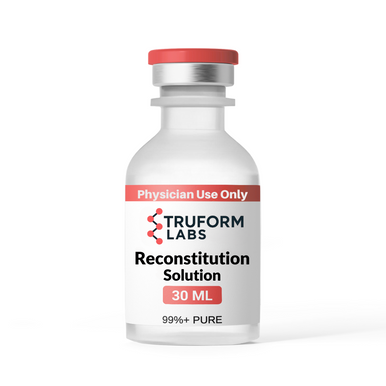Product Overview
Thymosin Alpha 1
Thymosin Alpha 1 (TA1) is a 28–amino acid endogenous peptide with broad immunomodulatory properties, widely studied and utilized as an adjunct in viral infections, malignancies, and immune-dysfunction states.[1–11] TA1 acts as a biological response modifier, enhancing innate and adaptive immunity via TLR activation, cytokine upregulation, and modulation of T, B, dendritic, and NK cell function.[2][3][5–7]
Mechanism of Action & Immunomodulation
- Engages TLR2/3/4/7/9, activating IRF3, NF-κB, and MyD88 pathways → increased proliferation/activation of T cells, B cells, macrophages, and NK cells.[2][3][5–7]
- Enhances antigen presentation, promotes cytokine/chemokine production, and can reverse T-cell exhaustion to restore immune competence in immunosuppressed states.[12][5–7][9][10]
Clinical Applications
- Viral infections: Approved in several countries for chronic HBV/HCV; used as an immune enhancer in HIV and as an adjunct in COVID-19 (reduced mortality and restored lymphocyte counts in severe disease with lymphocytopenia/exhaustion).[1][2][4][8][12]
- Cancer: Adjuvant use (e.g., NSCLC, HCC) improves survival, reduces chemo-induced lymphopenia, and may augment checkpoint inhibitor efficacy by “warming up” cold tumors and reducing irAEs.[1][3][9][10]
- Sepsis: Meta-analyses show reduced mortality, improved APACHE II, and favorable inflammatory/immunologic marker shifts (effects on ICU stay/organ failure less clear).[1][11]
- Immunodeficiency & vaccines: Enhances vaccine responses in immunocompromised patients and helps restore immune function in aging, chemotherapy, and critical illness settings.[1][5–7][10]
Safety & Tolerability
- Extensive clinical exposure (>11,000 subjects) indicates TA1 is well tolerated with AE rates comparable to placebo and no major safety signals in long-term use.[4]
- No association with significant immunopathology, autoimmunity, or tumorigenesis; considered safe across severe infection, cancer, and immune-compromised populations.[1][4–7]
Summary: TA1 is a pleiotropic immunomodulator with evidence across viral infections, cancer, and sepsis, and a strong safety record. Its broad activation and restoration of immune function support use as an adjunct in immune dysfunction, infection, and malignancy.[1–12]
References
- Mao L. Int Immunopharmacol. 2023;117:109952.
- Tao N, Xu X, Ying Y, et al. Molecules. 2023;28(8):3539.
- Wei Y, Zhang Y, Li P, et al. Int Immunopharmacol. 2023;117:109744.
- Dinetz E, Lee E. Altern Ther Health Med. 2024;30(1):6–12.
- King R, Tuthill C. Vitamins & Hormones. 2016;102:151–78.
- Romani L, Moretti S, Fallarino F, et al. Ann N Y Acad Sci. 2012;1269:1–6.
- Romani L, Bistoni F, Montagnoli C, et al. Ann N Y Acad Sci. 2007;1112:326–38.
- Binder U, Skerra A. Int J Mol Sci. 2020;22(1):E124.
- Garaci E, Pica F, Serafino A, et al. Ann N Y Acad Sci. 2012;1269:26–33.
- Naylor PH, Quadrini K, Garaci E, et al. Ann N Y Acad Sci. 2007;1112:235–44.
- Liu F, Wang HM, Wang T, et al. BMC Infect Dis. 2016;16:488.
- Liu Y, Pan Y, Hu Z, et al. Clin Infect Dis. 2020;71(16):2150–57.
All COA’s avail upon request by email info@truformlabs.com.
Storage & Handling (Research Use)
- Lyophilized (dry) peptide: Store sealed at −20 °C (long-term). Short-term storage up to 2–3 weeks at 2–8 °C is acceptable.
- After reconstitution: Store at 2–8 °C and use within 7 days, or aliquot into sterile vials and freeze at −20 °C for up to 3 months.
- Light & moisture: Protect from light; keep container tightly closed to avoid moisture uptake.
- Freeze–thaw: Avoid repeated freeze–thaw cycles (use aliquots).
- Solvent compatibility: Use a sterile, compatible solvent per protocol; filter-sterilize if required.
- Labeling: Clearly label aliquots with concentration, solvent, and preparation date.
Storage guidance is general for research peptides and may be adjusted per your lab SOP.








